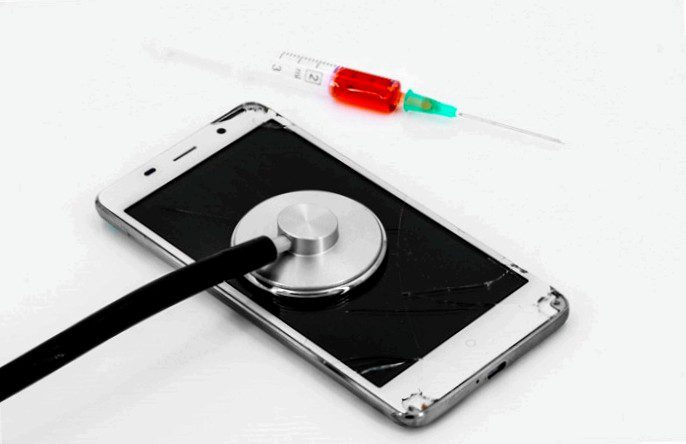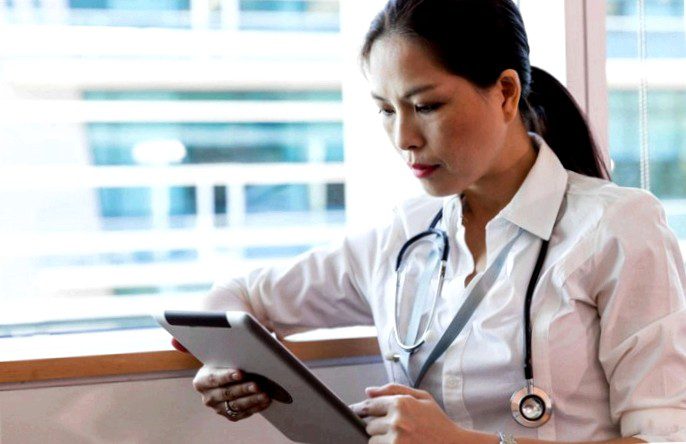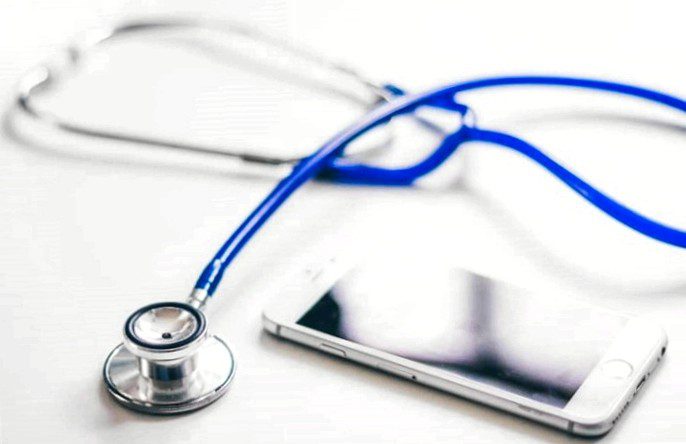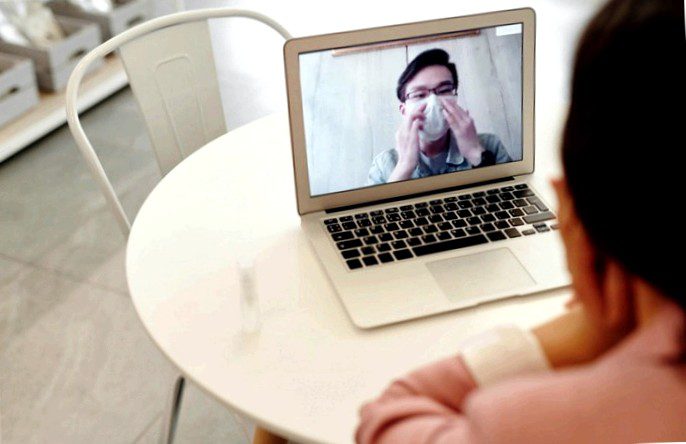
The changes we’ve seen in healthcare have been a source of debate in recent years. The Big Data revolution in particular has been heating up – not entirely without justification. Because it’s not just about capturing large amounts of data, but also knowing how to analyze it. The more effective the data analytics, the more accurate they provide information about patient health and how lifestyle or genetic factors may be influencing it. And the current technological transformation goes even further. Soon, telemedicine could also change the face of healthcare or even the healthcare system as a whole.
Telemedicine has not just been around since yesterday, and yet for a long time it has been very slow to develop. This changed abruptly with the outbreak of COVID-19. Because of social distancing mandates around the world and doctors’ attempts to limit direct contact with patients, people suddenly turned to telemedicine apps in greater numbers. These enable physician consultations and primary care without direct contact with the patient. Even after the pandemic, telemedicine is likely to stay with us. One reason for this may be that both healthcare providers and patients are becoming more and more accustomed to it.
While the trend toward telemedicine has been greatly enhanced by the pandemic, other aspects of our everyday lives also play a role. We are now accustomed to video calls and video conferencing, and the way we work has changed, as has our daily lives – interacting with globally dispersed clients and colleagues or with family and friends.
Thus, there is much to suggest that telemedicine will most likely have a promising future in the healthcare system even after the pandemic is over. It offers us the possibility of quick and easy medical consultations without the hassle of visiting a doctor’s office or clinic.
But what exactly is telemedicine? What is the target audience for telemedicine in the U.K? What are its advantages and disadvantages? In this guide, we provide a comprehensive overview of what is meant by telemedicine (or more generally, telehealth , known as e-health in Germany) and how it will change the delivery of healthcare services in the years to come. Starting with the exact definition and a look at the history to the advantages and possible disadvantages of telemedicine, the different categories and the terminology used. Curiosity has set in? Read more.

What is telemedicine?
In short, telemedicine is the remote provision of medical care and advice.
This is done, for example, via the Internet and video chat apps. With video chat now widely available, many healthcare providers are turning to e-health methods to take some of the pressure off their tight budgets.
Patients also seem to be becoming increasingly accustomed to the idea after some initial uncertainty. As mentioned, COVID-19 led to a sudden increase in remote appointments as physicians sought to limit direct patient contact.
Telemedicine allows patients and physicians to communicate with each other no matter where they are located. All that is required is a reliable Internet connection. But telemedicine has much more to offer than just standard video calls. Telemedicine apps allow doctors and patients to share different types of information, e.g. B. Results of blood pressure measurements and other examination results.
As patients have experienced how technology changes their daily lives, it is natural for them to expect the same in healthcare. Of course, telemedicine is not a complete substitute for in-person doctor visits or clinical services – in many situations, doctors need to have their patients in front of them. For brief checks o. a. Telemedicine is, however, very well suited to.
It’s also important to note that telemedicine is divided into several categories. In particular, one distinguishes the following three main categories:
- Interactive telemedicine (patients and doctors communicate in real time)
- Store-and-forward (healthcare providers may share stored patient medical data with other practices)
- Telemonitoring of patients (data collected with mobile medical devices is used by remote providers to monitor patients and the success of treatment)
Probably the category best known to patients is interactive telemedicine. Here, they get a remote appointment with their doctor via one of the available mobile apps.
As mentioned earlier, telemedicine care has several different manifestations. Most often, patients speak with a medical professional in a video call to discuss their concerns and complaints. Telehealth apps are subject to strict privacy and security requirements, so patient privacy is protected.
Other telehealth services, in turn, are used to monitor patient conditions using portable kits and devices. Telemedicine can also take the form of videoconferencing, or storing and forwarding data for peer review. It always comes down to what patients need and which method is best suited for their individual medical care.
It is now commonplace to use telemedicine for a wide range of conditions, e.g. B.:
- Asthma and respiratory infections
- Cold and flu
- Sprains and strains
- Arthritis
- Bronchitis
Furthermore, telemedicine can be used by surgeons to monitor patient condition after surgery. Similarly, oncologists can talk to their patients about outcomes and treatment plans via telemedicine. While this could also be done over the phone, in this case, seeing the person to talk to can help reassure them. In addition, the video feature gives patients the opportunity to show any visible physical symptoms of a disease.
In addition, it depends on the type of healthcare provider, which variant of telemedicine is available in an individual case. For example, some private healthcare providers may or may not offer a telehealth solution, depending on the nature of the consultation.
If in doubt, talk to your medical contact or insurance company (in the U.S. z. B. Medicare or Medicaid) if you want to know more and are unsure what telehealth options are available to you. You can also get more detailed information about the applicable regulations and security measures there. The confidentiality of your data and the protection of your privacy should of course be a top priority. Checking this out in detail is always advisable, if only to give yourself reassurance.

Definition of telehealth
Given the recent developments that have led to the rapid growth of telemedicine and the plethora of different services offered through telemedicine apps, there is almost inevitably some uncertainty about exactly how to define telemedicine and under what specific circumstances. As mentioned earlier, the term telemedicine is used very broadly to cover the wide range of different functions and services it offers.
Telehealth companies sometimes use the term perhaps too arbitrarily, making it difficult for patients (as laypeople) to understand its exact meaning. Therefore, let’s take a closer look at how telehealth can be defined to remove doubts and clarify the correct meaning.
There is a lack of clarity especially about the terms ‘telemedicine’ and ‘telehealth’ (known in Germany as e-health). Today, they are increasingly exchanged among each other at will, respectively. used as synonyms. But this may only add to the confusion and ignore how the two terms differ.
Telehealth (e-health) is the umbrella term for a broader range of IT-enabled healthcare solutions. This includes telemedicine, but its significance is more circumscribed. Let’s take a closer look at the terminology here and try to provide a little more clarity.
The World Health Organization (WHO) defines telemedicine as "healing from a distance," d. h. Than remote delivery of healthcare services to patients. This includes the use of communication technology (z. B. video-based apps) to provide remote care or make a remote diagnosis to. Accordingly, the use of medical imaging or video consultations can also be classified as telehealth.
But how is telehealth to be defined?? Telehealth, in short, refers to the use of information and communication technologies to provide and support:
- medical care over long distances
- Public health measures
- General health education
- specific medical education
- Administrative functions
This is therefore a much larger field of activity than telemedicine, even though it includes it. This is evident by the fact that the definition of telehealth also includes support functions. That is, remote administrative meetings or videoconferencing in the medical community would also be good examples of telehealth.
The healthcare sector continues to debate the definitions of telehealth and telemedicine, while the media – and, consequently, patients – tend to interchange the terms at will. When we talk about telemedicine in this guide, we refer only to this specific term to avoid further ambiguity.
If you, as a normal patient – and thus as a layperson – should ever use the term ‘telehealth’ in conversation with a healthcare professional, your interlocutor will still know what you mean. It is not necessarily just a matter of using the right terminology.
Rather, it can be assumed that in the course of the further development of telemedicine, the term will also expand to include a broader range of treatments and services. The boundary between telemedicine and telehealth is then likely to become more fluid than it has been up to now.
For ordinary patients, who generally do not keep up with the latest developments and details of health care, terminological ambiguities can easily arise here. This point will hopefully be recognized and taken into account by telemedicine providers and physicians in the future.
If you as a patient have difficulties with the different terms and their sometimes inconsistent use, you can always contact a medical professional for clarification or research on the Internet (for example, on trusted sites such as that of the NHS).

History of telemedicine
Telemedicine platforms have only recently become known to a wider public, so it would be quite forgivable to think they are an entirely new phenomenon. It almost seems as if it has come out of nowhere over the past decade, but in fact the history of telehealth technology goes back much further than that.
For well over half a century, healthcare providers and medical professionals have experimented with different ways of delivering remote services. It is only in recent years that telemedicine as we know it today has developed from this.
To understand the long history of telemedicine, one must first consider the origins of telecommunication technology. The success story of telecommunications began in the late 19. This was the birth of inventions such as the telephone (in 1876 by Alexander Graham Bell), radio (in the 1880s and 1890s by pioneers such as Heinrich Hertz and Guglielmo Marconi), the telegraph, and other technologies.
In addition, with the new means of transportation, railroads, which were able to distribute national daily newspapers widely, experienced mass communication in the 19. A rapid upswing in the twenty-first century. In this way, something like a general public emerged for the first time, generating a demand for further new forms of communication.
From the turn of the century, the application of these new technologies began to expand and to be used for other new inventions, including medical ones. This had already been predicted in 1879 in a report in the leading medical journal "The Lancet". This report speculated on how the phone could help reduce the number of unnecessary office visits. This approach should be further developed in the years to come. If communication technologies such as the telephone could help prevent unnecessary office visits, what other uses could be envisioned?
Among the attempts at technological innovation, of course, there were also those of a more unconventional nature. In 1925, for example, Hugo Gernsback – an inventor originally from Luxembourg – designed a fantasy model of a ‘teledactyl’. This was a peculiar instrument for the tactile examination of patients from a distance by means of radio technology and a connected video feed. The vision of this device never came to fruition – fortunately, perhaps – but it was a first step on the road to video-based remote physician consultations for patients. However, this should only become an everyday reality many years later.
From the 1950s, telemedicine gradually began to take recognizable shape. In the U.S., for example, two health centers in Pennsylvania at the time were using telephone technology to exchange X-ray images. This was later developed into a "teleradiology" system by Canadian physicians in the Montreal region.
Another major developmental step was taken by the University of Nebraska in 1959 with the use of a two-way interactive television system to transmit images of neurological examinations to students across campus. Five years later, the university networked with Nebraska Norfolk State Hospital, 180 km away, to enable exchange and mutual consultations.
In the early stages of using these early forms of telemedicine, they were still primarily for the purpose of reaching patients in remote rural areas of North America, where there was a shortage of medical facilities and specialists.
However, health care providers and government agencies soon recognized the potential of this technology to go far beyond that, and in particular to address health problems of marginalized urban populations who often lacked access to medical advice and treatment. Further potential of telemedicine was seen in the reduction of waiting times through easier exchange of patient data and test results.
As a result, telemedicine has continued to expand with correspondingly large investments by the U.S. government, z. B. by NASA, the U.S. Department of Defense, and various divisions of the U.S. Department of Health and Human Services. Financial support induced further innovation in telemedicine and led to rapid advancement of the technology in the 1960s and ’70s.
An early application roughly comparable to telemedicine was the use of radiotelephone channels by firefighters. It used this method to transmit electrical heart rhythm signals from emergency locations to local hospitals so that the vital status of the person being treated could be monitored remotely by a physician during a critical period.
Another telemedicine project from this period was STARPAHC (Space Technology Applied to Rural Papago Advanced Health Care). This partnership between NASA and IHS (Indian Health Service in the U.S. Department of Health and Human Services) developed a system that could provide telemedicine care for both Papago Reservation residents and NASA astronauts on their space missions.
While projects such as STARPAHC had more of a niche function, they provided the impetus for further discoveries in the field of telemedicine. They also provided new insights to the medical community about potential applications of the technology to provide medical services and virtual consultations regardless of patient location.
In recent years, telemedicine and e-health continued to gain ground and expand their range of technologies and services. This includes, of course, the increasingly widespread use of telemedicine apps, but modern healthcare technologies also take their cue from the history of telemedicine’s development.
With portable fitness monitors, for example (heart rate monitors, smartwatches, fitness bracelets, etc.), telemedicine became the most popular technology.), health data can be displayed and monitored in real time. Even smartphones often offer their own telemedicine app by default, allowing users to monitor their daily step count. The widespread use of smartphones, laptops, tablets and other mobile devices has made it easier than ever for patients to access telemedicine services – a trend that is expected to accelerate in the coming years.

Advantages of telemedicine
The potential benefits of telemedicine have been hotly debated on and off for the past decade or so. As mentioned earlier, COVID-19 forced the medical profession to telemedicine a larger share of care to keep as many patients as possible out of clinics and offices (and away from cramped, crowded waiting rooms where the virus can easily spread).
And by now, we can safely assume that telemedicine will stay with us. But it’s worth taking a closer look at its potential benefits and considering how both patients and telehealth providers might benefit from the greater adoption and implementation of telehealth services.
The most immediate benefit of telehealth is that it opens up many ways to help patients access healthcare, improving the overall patient experience. First, of course, this affects patients who have limited mobility due to illness or physical injury and therefore have difficulty getting to an ambulance, doctor’s office, or clinic. Similarly, physicians are not always available for home visits (their time is precious and the number of patients to be served is large). Telemedicine thus helps both to save unnecessary effort and time.
Telemedicine also makes it possible to provide medical care to people wherever health care facilities are lacking in the immediate vicinity. In countries like Germany, the vast majority of people own smartphones, laptops, tablets or other mobile devices. Even in less affluent countries, these are basic amenities for much of the population.
For example, people who do not live near a clinic or surgery can now get medical advice thanks to telemedicine, which they may not have been able to do before.
Telemedicine has also made it easier to get specialized specialty care, which is typically more difficult to access than general medical practices. Patients who need appropriate advice (e.g. B. for rare cancers or other rarer diseases), receive them via live video through telemedicine apps or services.
Similarly, smaller, less extensively equipped hospitals can take advantage of telemedicine by using their own telecommunications services to effectively outsource certain treatments or diagnostic processes, z. B. The processing of test results or the analysis of X-rays.
Another benefit of telehealth is that it gives patients more say in the type of care they receive. Many patients are frustrated when they feel their treating physicians are barely listening to them. Others avoid or skip medical appointments because they are afraid to do so for a variety of reasons.
Telemedicine helps patients to have more regular contact and thus a better relationship with their treating physicians. It also makes it easier to get a preventive or checkup done. In addition, telemedicine offers the ability to save a visit to the doctor’s office and easily seek medical advice from home.
Likewise, as mentioned, telemedicine can help relieve tight budgets for many healthcare providers who may be under financial pressure due to government constraints. They often have difficulty funding certain services and therefore have to try to free up financial resources elsewhere to do so.
By making healthcare delivery more efficient, telemedicine could help solve such problems and allow providers to save financial resources to be used elsewhere. This would make funds available that are urgently needed for other purposes, and ultimately achieve better outcomes for patients. For this reason alone, telehealth services can be expected to become increasingly prevalent.
However, the greatest potential benefit of telemedicine is that it can help provide better medical care to patients, improve their quality of life, and save lives. With telemedicine, it is possible for patients and physicians alike to contact each other to discuss the course of treatment, further treatment options, etc. To discuss.
The increasing use of telemedicine, also for more complex treatments, provides patients with easier access to such therapies and raises the standard of care. Benefits such as these are not only of marginal importance, but can contribute a great deal to the quality of life of patients, who thus receive the right care, always and everywhere.
The widespread use and availability of consumer technology – the smartphone has become a constant companion for most – could be used to reach patients more easily. We already take video communication with our smartphones for granted in our everyday lives, so it would only be a small step toward video consultations with doctors.
Certainly, it will take some time until all patients (especially from older age groups) get used to the idea, but it is hard to imagine healthcare without telemedicine and it could become the greatest achievement of our time in the healthcare sector. Similarly, the benefits of e-health are already widely recognized by the professional community.

Categories of telemedicine
Let’s go back to the different categories of telemedicine mentioned earlier. Telemedicine is not just video consultation with the doctor, as we may have experienced ourselves or seen in the media, but a much broader term that also includes other technologies. The same is true of e-health, which goes even further.
As telemedicine continues to evolve and become more widespread, more new telemedicine services and technologies are likely to emerge. Below, we present the categories of telemedicine and their respective fields of activity in more detail.
1. Store-and-forward
Store-and-forward telemedicine, also known as asynchronous telemedicine, is used by medical professionals to exchange patient information between different locations. This information includes, for example:
- Videos
- Test results
- Imaging examinations
- Other information relevant to patient care
However, this type of information exchange should not be confused with simple email, as it is subject to strict security controls to ensure the confidentiality of medical data or other patient-related information.
Asynchronous (store-and-forward) telemedicine offers several advantages for both physicians and patients, most notably high efficiency. Patient information can be passed from one specialist to another much more easily, allowing for faster diagnosis and more efficient treatment.
Colleagues at different locations can collaborate more easily because they can easily exchange and review patient information and health data among themselves. Asynchronous telemedicine is similar to collaboration solutions that many of you are probably familiar with from your own work environment.
Store-and-forward telemedicine platforms also offer healthcare providers the benefit of fast and secure information exchange between different locations. For example, if a patient record is needed by a healthcare provider at the person’s previous residence on another continent, store-and-forward can easily bridge the distance. Commonly used in radiology, ophthalmology, dermatology and pathology, among others.
2. Telemonitoring
Telemonitoring is used to care for and monitor patients remotely using various devices. It is also known as self-monitoring or self-testing and allows healthcare professionals to monitor patients’ health remotely. People therefore often use telemonitoring to monitor chronic diseases such as asthma, diabetes and cardiovascular disease.
Patients with diabetes, for example, can use telemonitoring to keep their treating physicians informed about blood glucose levels, and telemonitoring can also be useful for health monitoring for patients living in social care facilities. It gives them the ability to perform tests themselves at home in the privacy of their own home and then forward the data to their treating physicians, rather than having to make an extra trip to a clinic or doctor’s office to do so.
It should be noted, however, that self-testing carries the risk of possibly not being performed correctly as a layperson, and thus obtaining either an unreliable, ineffective, or no result at all. Telemedicine providers and healthcare providers must generally take this aspect into account and give patients clear instructions on how to carry out telemonitoring. Nevertheless, practice shows that telemonitoring results are similarly accurate to results from standard tests performed by medical professionals.
3. Real-time telemedicine
This category of telemedicine is likely familiar to most patients (even those who have not yet used it). Among other things, it offers an easy route to specialist medical advice in the event of illness and saves the effort of visiting a doctor’s office in person, which is a great relief, especially for people with multiple complaints. A typical function of telemedicine apps is medical consultations via live video.
Using videoconferencing software, these are performed in real time. With the advancement of Internet technology over the past few decades, it is now possible to hold online, uninterrupted teleconsultations via video.
The other categories of telemedicine differ from real-time telemedicine mainly in that they are often just a supplement to an in-person office or clinic visit, while real-time telemedicine usually replaces the in-person appointment. This may then be required at a later date as part of further treatment.
Because real-time telemedicine is so practical and simple, it is used in a wide variety of situations. These include:
- Primary and emergency care
- Treatment of chronic or long-term conditions
- Follow-up meeting
Despite apparent similarities, a doctor’s conversation via video is not to be confused with everyday communication via familiar video apps. Since confidential content is discussed in a teleconsultation, telemedicine apps must in many cases meet higher security requirements to protect sensitive patient data.
But there are more than just practical reasons to conduct medical consultations using real-time telemedicine software. Cost reasons (potential relief of tight budgets, see above) and higher patient satisfaction also play a role. Regularly seeking medical appointments for ongoing medical care and repeatedly visiting the doctor’s office in person can be a hassle, even for patients without mobility impairments. This effort is eliminated with telemonitoring, which is much easier to fit into busy schedules and coordinate with child care.
In addition to standard general practice video consultations, there are other types of real-time telemedicine. Teleneuropsychology, for example, is used to perform neuropsychological testing to determine whether a patient has a cognitive disorder or other mental illnesses. Telecare is used to remotely diagnose or monitor symptoms in patients with more minor conditions.
Telepharmacy provides pharmaceutical advice to patients, and telerehabilitation can be used to oversee clinical interventions and therapy for patients undergoing physical rehab.
It is up to healthcare providers and telemedicine vendors to advise the person being treated accordingly to find the right solution for them, no matter what category of telemedicine is needed. Each has its own field of application, and new telemedicine services will be added as technology continues to evolve.
The main goal of telemedicine is to provide patients with the care they need, according to the general standard and in the form that suits them best. One can hope that telemedicine will provide more and more people with better access to appropriate healthcare in the years to come. This is especially true for people who have limited mobility, who do not have access to medical care or who do not have access to specialist care in remote regions.

Limits of telemedicine
We have already talked about the advantages of telemedicine. Now we come to the deficits, which – as with any new technology – are also part of it and must be taken into account.
The spread of telemedicine continues to be held back by various obstacles. They are due on the one hand to socially rooted attitudes and habits with regard to health care, and on the other hand to age-related acceptance. It is important to be aware of these barriers in order to overcome them in the long term.
So where do the difficulties lie, how do they affect widespread adoption of video-based medical teleservices, and to what extent can they be overcome in the coming years? This is what we want to address below.
One obvious aspect that remains a concern for many patients is that the introduction of telemedicine may make it more difficult to get an in-person consultation. Again, this is partly an age-related factor – older people who are less familiar with these technologies in general (especially in the medical field) may be more skeptical and reluctant to use telehealth services.
The financial aspect for healthcare providers has also already been mentioned. Some of them may be tempted to reduce face-to-face medical services in favor of cost-saving telemedicine consultations or video consultations, even if many patients are skeptical of these or would like to see a balance of the two forms.
It is clear, of course, that telemedicine will never completely replace a personal visit to the clinic, emergency room or practice. In medicine, physical examinations will always be necessary so that doctors can see for themselves what their patients are suffering from. Many also perceive telemedicine as impersonal and feel like being processed on an assembly line – a rather unfounded criticism, as the standard of a consultation depends in each case on the person treating the patient, even if that person is often subject to certain restrictions themselves. But the view is still widespread and should not be ignored. Healthcare providers have a responsibility not to replace face-to-face treatment and consultation with telemedicine to an inappropriate extent, but to give both scenarios their place.
Another potential problem is that continuity of care may be compromised if telehealth is not used with due care. This factor plays a particularly crucial role for patients with long-term or multiple illnesses.
Patients who receive telemedicine consultations from not one, but multiple physicians may feel shuffled around by this lack of continuity. People who sign up for a telemedicine app can schedule a consultation, but they can’t express preferences about who they see. It’s up to telemedicine providers to ensure continuity for patients and make sure they can stay with one contact throughout.
Introduction and expansion of telemedicine services are often a challenge for providers as well. In the foreground is the question of cost, as the technology is very expensive and entails further costs.
Physicians and staff need to be trained and may need to change their work processes to provide and manage telehealth services. Impacts on employee productivity will therefore not be absent, at least during the familiarization and integration phase.
In addition, both patients and providers must navigate the complex guidelines and regulatory requirements for telemedicine. While privacy regulations for confidential patient data in the medical field are professional standard anyway and therefore known to every healthcare provider, specific requirements apply in telemedicine, which may lead to initial difficulties.
Similarly, patients should be made aware of what their rights are and what measures are in place to ensure their protection when using telehealth services. This could do much to reduce reservations about the technology, improve transparency and increase the general acceptance of telemedicine.
So there is much to suggest that telemedicine will most likely have a promising future in the health care system even after the pandemic is over.